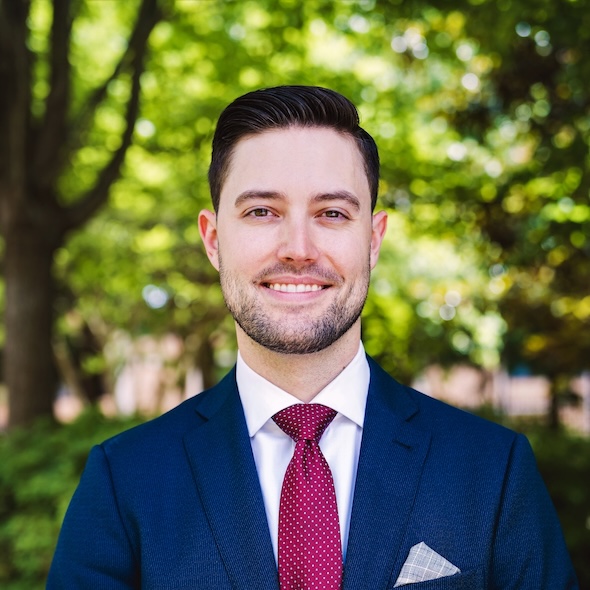
(Image: Nikola Johnny Mirkovic/Unsplash)
This story is part of From the Frontline, a guest-contributed column where we hear directly from climate justice advocates and those who are impacted by climate change. If you're interested in contributing your perspective on climate justice and clean energy to this column, please get in touch with us here.
The U.S. Federal Energy Regulatory Commission (FERC) recently announced a long-awaited Grid Expansion Rule that requires regional utilities to create 20-year plans for updating the electric grid. The build-out of power lines has historically been sluggish and siloed, leaving the expansion of the grid ill-equipped to meet increasing energy demand. The outdated and fragmented grid also poses major barriers to clean energy expansion, limiting the benefits of solar and wind projects like affordable energy costs and good-paying green jobs.
The rule itself is resource-neutral — meaning it doesn’t prescribe a certain energy mix of renewables or fossil fuels — but progressives and conservatives agree that the rule will accelerate the expansion of clean energy projects while making the grid more resilient and reliable. However, the FERC’s new rule alone will not be enough to produce clean energy where it's needed. Getting permission to build clean energy projects poses perhaps an even greater threat to progress.
That’s why we need permitting reform. Even with record investments in clean energy from the Inflation Reduction Act (IRA), we won’t be able to maximize those funds without seriously improving how we build and maintain essential infrastructure. Those who will pay the cost of inaction are disadvantaged communities that are most impacted by climate change, have the least access to clean technologies, and struggle most to afford their energy bills.
Permitting and transmission reform can provide jobs and economic opportunity while reducing pollution, making electricity more reliable, and creating better health outcomes. This is about people and communities, especially those most impacted by poverty and pollution. Accelerating the deployment of clean energy and accompanying infrastructure means cleaner air and water, good-paying jobs, and energy bills that don’t break the bank.
However, the transition to cleaner technologies must be intentional. Speeding up permitting processes cannot come at the expense of thorough environmental reviews and robust community engagement. This is critical to not only confront environmental racism that plagues low-income communities and communities of color, but also to steward an inclusive green transition for communities that have relied on the fossil fuel industry for their livelihoods.
After decades of working to extract and refine coal, oil, and natural gas, many rural communities are at risk of being left behind. New clean energy and transmission projects need to be built sooner rather than later to stimulate rural economies and tackle air and water pollution.
The current process for obtaining permits to build energy projects is agonizingly slow. Approvals take an average of four years, but oftentimes that process can take over a decade. The Grain Belt Express is one example. It’s slated to connect renewable energy generated in Kansas to surrounding states, delivering over $13 billion in energy cost savings and creating over 22,000 jobs. The project has been caught in the throes of permitting since 2010, culminating in 14 years of delays that hinder the expansion of clean, affordable energy in the Midwest.
Getting permission to build energy projects is not only slow, but it also does not sufficiently protect communities. The National Environmental Policy Act (NEPA) requires federal agencies to consider the environmental and public health benefits of proposed infrastructure projects. It was designed to prevent environmental harm and harm to communities, but much harm has occurred since its inception.
In a growing number of instances, NEPA is used to prevent clean energy projects that would clearly benefit both the environment and communities. This is demonstrated by the fact that lawsuits are currently blocking solar projects more often than fossil fuel facilities or pipelines. The current process was designed with good intentions, but it is time to adapt it to better meet its goals.
Communities deserve access to cleaner, more affordable and more reliable energy. With new rules and funding dedicated to modernizing our outdated grid, now is the time to improve permitting processes. It won’t be easy; conducting meaningful community engagement, deploying new technologies, and finding common ground come with their own unique challenges. But we can’t afford to wait a decade to see the benefits of clean energy — especially for communities most impacted by climate change. They have waited long enough. With permitting and transmission reform done the right way, we can unleash the clean energy economy and create unprecedented environmental, economic, and health benefits for communities across the nation.

Kyle Kammien is Dream.Org’s Policy Director for the Green For All program and works to ensure communities most impacted by climate change benefit from historic federal climate investments. He also leads national efforts to find bipartisan climate solutions that move the needle on climate equity.














